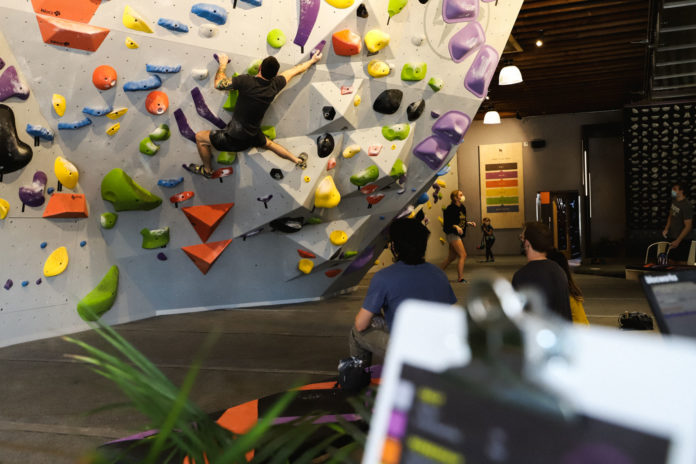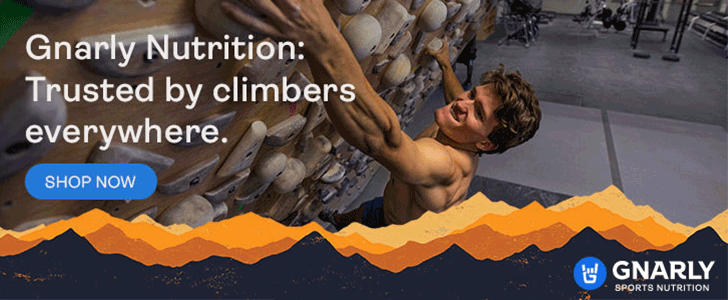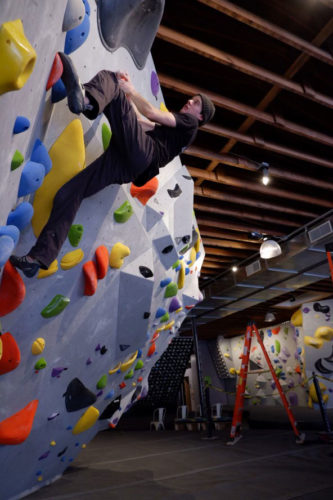
Name: Trevor Galvin
Title: Operations Supervisor at Blocworks
Location: Edmond, Oklahoma
Behind the Desk is an ongoing series that interviews people who work in the climbing industry. For this installment, we headed to central Oklahoma to chat with Trevor Galvin, who oversees much of the programming—and also does some routesetting—at the Blocworks gym.
Like many climbers in the region, Galvin first got hooked by scaling the converted grain silos at OKC Rocks [now known as OKC Silos – Summit Climbing, Yoga, and Fitness] before venturing outdoors on routes in the nearby Wichita Mountains. And that love of climbing—indoors and outdoors—eventually led to Galvin’s current role at Blocworks. But there’s an interesting deviation in Galvin’s backstory too: He also happens to be a professional saxophone player—he even lived in New York City for a while while pursing that career path. So, we wanted to hear all about where and how professional musicianship converges with a career in the climbing industry, and how Galvin manages to make it all work at Blocworks.
BURGMAN: The fact that you’re also a professional musician is interesting because that’s not something I’ve yet encountered with other gym staffers. Are there any similarities or differences between the professionalism of the music scene and the professionalism of the climbing scene?
GALVIN: Routesetting was something I’d wanted to get into for a long time, and I would say really putting a lot of attention into our routesetting [at Blocworks] is really part of our brand. And I guess where that connects to music, for me, is in terms of the experience that you’re trying to provide people. With music, something you run into with a lot of musicians (professional or otherwise) is that there’s this rift between wanting to play the music that you want to play, and wanting to play the music that other people—the audience—wants to hear.
On one hand, you want to play stuff that people are going to enjoy. But I’m also not the type of person that wants to just take requests and hear people shout ‘Free Bird’ [by Lynyrd Skynyrd] at me [laughs]. So, I guess that carries over to the climbing gym industry and routesetting, in terms of the product that we’re providing people. We want to toe the line between setting interesting things that will challenge stronger climbers—and create an interesting environment where strong, experienced folks are going to come in and have a good time—but also provide stuff that will give a great access point for people who aren’t as familiar with climbing. We’ve mentioned that a gym is that access point, and I think we’re very cognizant of that. We understand how great the experience of climbing outside can be, so we definitely try to be as open of a gateway to that world as we can.
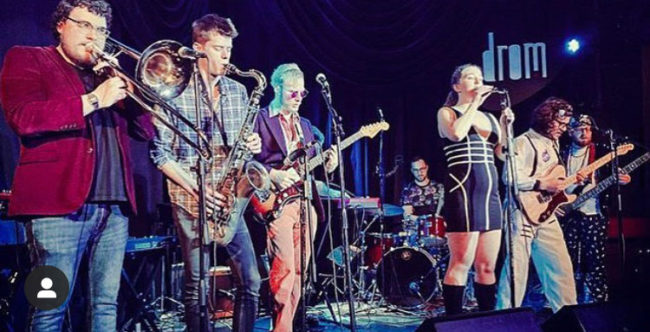
Talk more about toeing the line in routesetting. I think routesetting is a unique craft that has to be utilitarian, and might force certain moves—but it can also be very artistic, perhaps not all dissimilar from music.
Yeah, when talking about routesetting and certain moves, I find I much prefer the verbiage of ‘inspiring’ certain movement, rather than ‘forcing’ certain movement, just because it’s more about creating opportunities than it is about directing into a pigeonhole. So, yeah, I guess for one climber, a cozy dyno might be that ‘Free Bird,’ meaning it’s something they’ve seen on Instagram, they get super stoked about it, and they want to get a video of themselves doing it. At the same time, for someone with more experience, that dyno isn’t going to be the thing that sends them back home talking to their friends about the super cool boulder. But for that person that was able to experience that ‘Free Bird’-like boulder, that might have made their week. So, wrapping back to the music analogy, what we’re really looking to create is a great experience for as many people as possible.
How much does that awareness that your boulders might actually show up on Instagram play into a routesetter’s mindset nowadays?
That’s a great question. Of course, safety is always the priority, and I don’t think we ever put up a boulder and think, ‘Oh yeah, this is going on a ‘gram!’ But it is something that’s definitely in the back of our mind. We’ve definitely noticed how it’s a very real part of the equation now. While we’re not necessarily actively addressing that part of the equation with every single boulder set, it’s definitely in the back of our minds. I guess it comes back to our overarching philosophy as a gym, which really centers around creating a community where people will feel welcome—and helping facilitate connections between people. I recognize that Instagram can facilitate those connections; it is another tool in the toolkit of facilitating those connections.
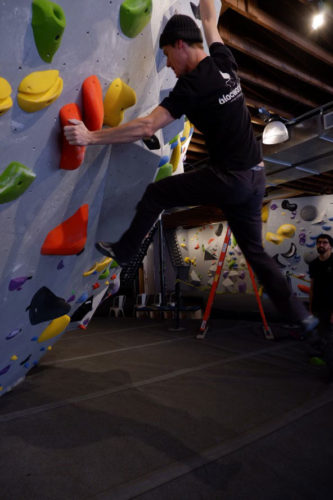
Your title is Operations Supervisor, which must entail more than routesetting. What other aspects of your job do you find most interesting?
This is a pretty new position for me, and as a company we’re pretty new; the gym opened in February, 2020. So, I think what has been interesting for me is there has been a lot of trial and error in the approaches we’ve taken. We’re always checking out other gyms and seeing what works for them—and we’ve tried a lot of little things with programming, as far as events for members, competitions and that sort of thing. We’ve found that some things that work for other gyms don’t translate as well to our community for whatever reason, and some things that are thriving at our gym just aren’t viable at other gyms.
Can you give some specifics and examples of things that have or have not worked?
I think other gyms have little ‘challenges’ for members. So, for example, we recently started a monthly challenge series. What we started with was a ‘volume of climbs’ situation—regardless of grade, people trying to get the most tops. Our walls only go up to 13 feet, so the challenge was to get to a total of 14,000 feet. People had to climb something like more than 1,000 climbs—and I think there were only two or three people who did that, across the entire month. But people wrote their name on a board and added to their total tally every time they climbed. And the month after that we did a crimp-pullup challenge. We got some Tension crimps—the ones that have 9mm on one side and 7mm on the other side. We put up a whiteboard and put up Polaroid pictures of people that could do a pull-up on the 9mm or 7mm edge. So, now we’ve got this great little board up front [of the gym] that’s full of pictures of tons of members. That has been a wild success—we’ve had a lot of people come in and ask, ‘What’s the ‘challenge’ for next month?’
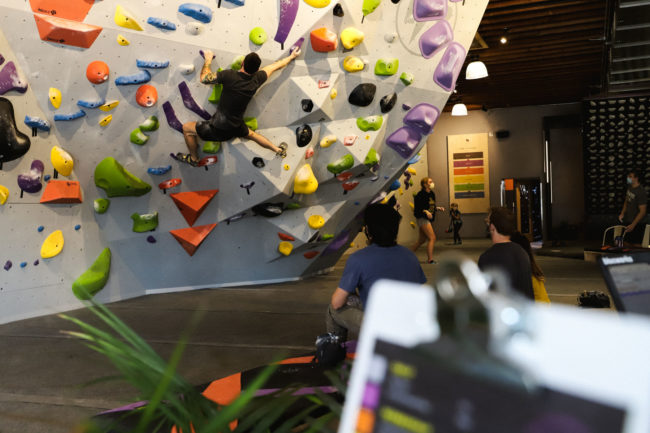
It’s great, too, because our membership base is a relatively tight-knit community compared to what you might find at much larger gyms. So, when you walk in and look at the board with Polaroids of a bunch of people, you’re going to see pictures of a bunch of your friends. This is just speculation, but that might be an example of something that might not quite resonate as well at a larger gym where people are—just from a numbers perspective—less likely to know as much of the membership base.
It sounds like one of the takeaways is that the ‘old’ tricks still work, in terms of membership engagement. I mean, having customers sign their names on a board, or getting their picture taken and posted on the wall…those are very old-school programming things, but still very effective, right?
Oh yeah—it goes back to the ‘No Cavities’ club at a dentist’s office. And that’s something that the Blocworks owner, Evan [Small], brings up all the time: He’s always up for trying something new, but I hear him say, ‘We’re not trying to reinvent the wheel.’ And I think that’s what we come back to. We’ve found that the simpler idea—whether with programming or training staff—seems to win the day.

John Burgman is the author of High Drama, a book that chronicles the history of American competition climbing. He is a Fulbright journalism grant recipient and a former magazine editor. He holds a master’s degree from New York University and bachelor’s degree from Miami University. In addition to writing, he coaches a youth bouldering team. Follow him on Twitter @John_Burgman and Instagram @jbclimbs. Read our interview Meet John Burgman, U.S. Comp Climbing’s Top Journalist.




